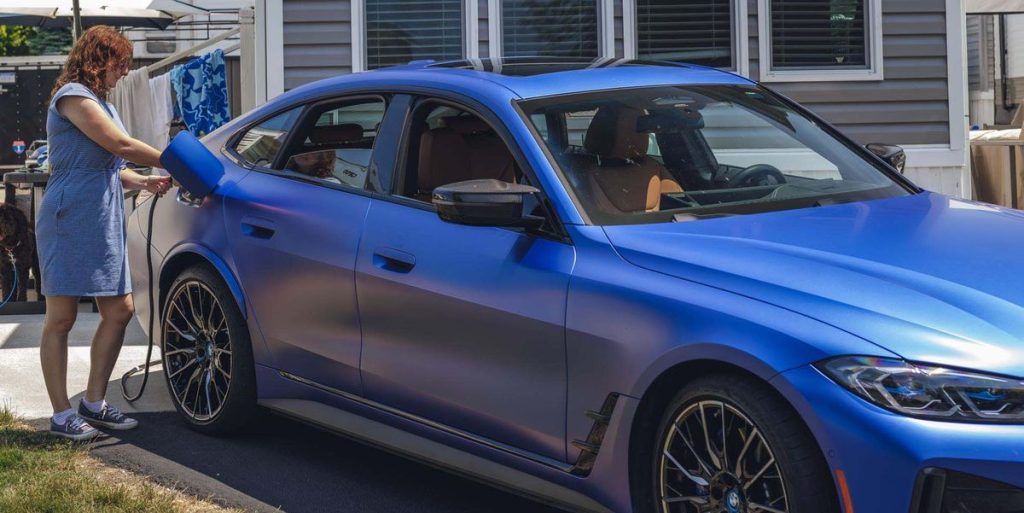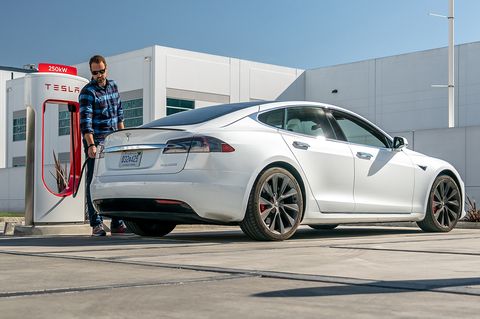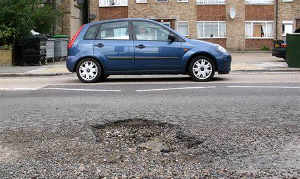Different Levels of EV Charging

You don’t need a degree in rocket science to charge an electric vehicle. Plugging in an EV to charge is no more difficult than fueling a gas-powered car. That said, things can get a bit confusing if you begin digging into the weeds of the different charging equipment and speeds. Jargon such as SAE J1772, DC fast-charging, or Level 1 and 2 chargers can make replenishing the charge of your EV’s battery seem far more complicated than it is. With that in mind, we’ve taken the time to break things down for you by explaining the basics of EV charging and the various “Levels” associated with it.
Electric Vehicle Charging Levels
The Society of Automotive Engineers outlines three levels of EV charging: Level 1, Level 2, and Level 3. The one you use at a given time could depend on a few factors, such as your home’s electrical system and the makeup of available public chargers in a given locality.
Level 1
Automakers often include Level 1 charging equipment with new electric cars. This device plugs into a typical household 120V outlet. The ubiquity of these ordinary household outlets makes Level 1 charging incredibly convenient, even if this type of charging replenishes your car’s battery pack at a very slow rate. Plan on seeing your EV add around two to four miles of range per hour, depending on the efficiency of your specific battery-powered car, truck, or SUV. This type of charging is much slower, far less efficient, and will cost you more than Level 2.
Level 1 alone won’t be enough to keep up with the charging needs of most EV owners. That said, if you only drive 20 miles or so each day, perhaps you could get by with Level 1 only. One quick point of caution: Never plug your Level 1 charger’s cord into an extension cord, as the wire’s additional length creates resistance that may overheat the extension cord and could also cause the charging equipment to fault out and stop charging.
Michael Simari|Car and Driver
Level 2
Level 2 charging operates at 240 volts and typically at three to four times the amperage of a lesser Level 1 unit. As such, the majority of Level 2 units add electricity to your EV’s battery pack at a rate that’s roughly six to eight times faster than Level 1 setups, equating to 12–32 miles of driving range for each hour of charging.
But the charging rate of Level 2 can vary quite dramatically. A typical 240-volt, 24-amp unit can put out about 6.0 kW of continuous power. But the fastest possible Level 2 charging is at 80 amps, or 19.2 kW, which is more than three times faster. The hardware on your car dictates the maximum Level 2 charge rate, and most cars aren’t capable of charging at 19.2 kW, so you’ll want to match your charging equipment to what your EV can handle to avoid paying for capability you can’t use.
We recommend that any EV owner install Level 2 charging at home. If your EV’s supplied or optionally available charging cord is incompatible with a 240-volt outlet, you will need to purchase dedicated Level 2 charging equipment for your home. You may also need to add electrical capacity to your home. Consult an electrician to ensure your home’s electric panel is up to the task.
Though installing Level 2 charging capability at home is an additional expense, a number of states and localities provide government incentives to offset some of the cost. Be sure to see if such incentives are available where you live.
Level 2 chargers are also the sort typically found in public spaces, such as parking garages and lots. The end of the cord that plugs into your EV looks identical to those you use for charging at home. These units can add a reasonable amount of range to your EV over the course of a couple of hours.
Level 3 or DC Fast-Charging
Level 3 chargers are the Speedy Gonzales of the bunch. Alternatively known as DC fast-chargers, Level 3 chargers are especially useful during long trips that necessitate charges between destinations, as this sort of charging can add around 100–250 miles of range in 30–45 minutes. Unlike Level 1 and Level 2 charging, Level 3 setups connect to the vehicle by way of a socket with additional pins for handling the higher voltage (typically 400 or 800 volts).
Tesla’s Supercharger network offers Level 3 charging, though the American automaker uses a proprietary plug that only works with its vehicles. Drivers of other EVs can find Level 3 chargers at a number of stations from providers such as EVgo and Electrify America.
Level 3 charge rates currently range from as little as 50 kW to as high as 350 kW, depending on the charger. But charge rate is a two-way relationship. If your EV can only handle a maximum of 50 kW on a Level 3 charger, then it will not charge any faster than this, even if it’s plugged into a charger capable of topping out at 350 kW. Additionally, the charge rate of an EV on a Level 3 charger changes dramatically depending on the battery’s state of charge, slowing considerably when the battery pack nears 80 percent capacity in order to prevent overheating or overcharging. For example, it may take just as much time to charge from 80 to 100 percent as it does from 10 to 80 percent. That’s why, on long drives with EVs, the quickest way to get back on the road is typically to charge no higher than 80 percent.

Marc Urbano|Car and Driver
Do All EVs Use the Same Connector?
As mentioned above, Teslas rely on a manufacturer-specific connector for charging. Adapters that allow Teslas to charge at public or at-home charging stations that do not use this Tesla-specific connector are available. In addition, there are adapters for plugging a non-Tesla EV into Level 1 or Level 2 Tesla charging equipment.
The vast majority of EVs use the same type of connector. For Level 1 or Level 2 charging, this standard round port is called a J1772 connector. The fast-charging hookup is referred to as SAE Combo or CCS; this employs the same J1772 socket of Level 1 and Level 2 charging plus two extra pins that enable DC fast-charging.
The third type of fast-charging connector is CHAdeMO. Few cars use this adapter, including the Nissan Leaf, though the Leaf still uses a J1772 port for Level 1 and Level 2 charging. That said, Nissan is ditching the CHAdeMO socket for CCS on its new Ariya.




